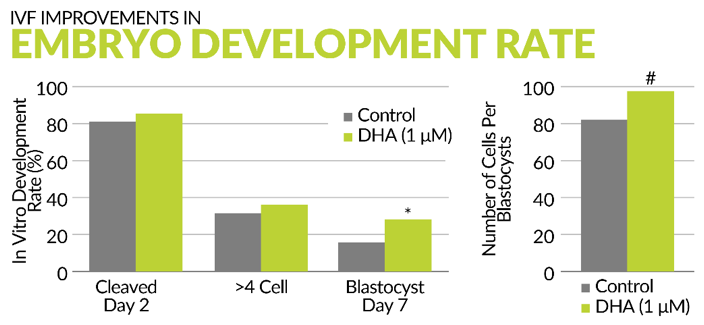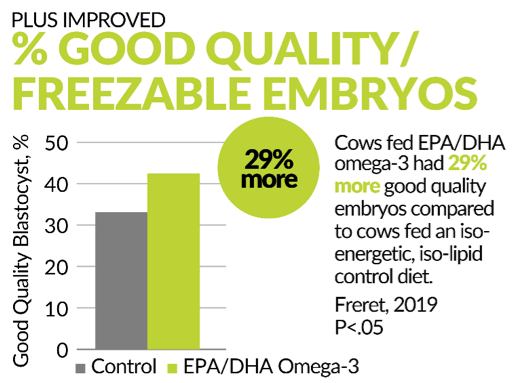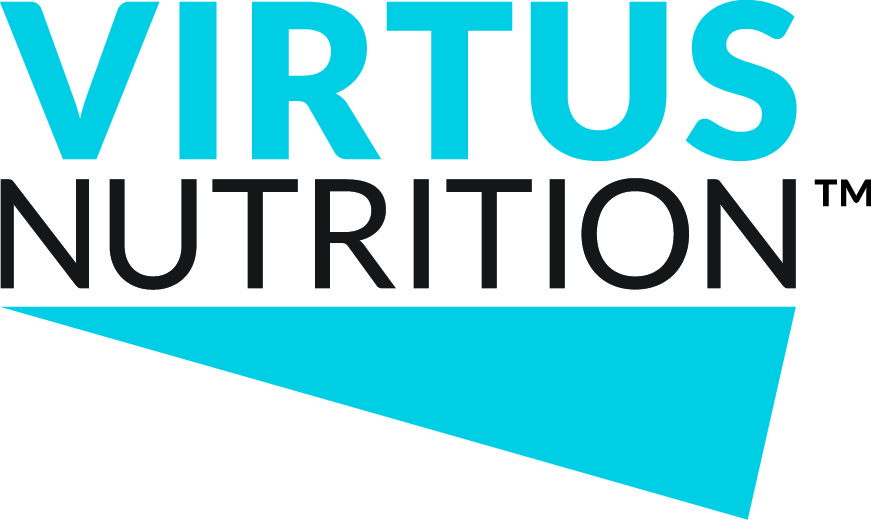Improving IVF with Omega-3s
When it comes to reproductive efficiency, in vitro embryo production (IVF) is a technology that is here to stay as it significantly reduces the genetic interval and complements the beef on dairy programs that have added a valuable revenue stream. The challenge of improving the number of viable embryos per ovum pick up (OPU) session is real. While about 80% of in vitro bovine oocytes undergo fertilization, only 30-40% develop to day 7 blastocyst stage, and only 50% of the transferred embryos establish a pregnancy (Wrenzycki, 2016). This leaves a lot of room for improvement! Let’s explore the current data on how EPA/DHA omega-3 improves embryo development and how this essential nutrient can be utilized to improve IVF results for both donor and recipient cattle.
Research supporting donor benefits
EPA/DHA omega-3 is an essential nutrient for many basic biological functions, including embryo development, cell signaling, immune regulation and energy utilization. Let’s look at a couple recent studies that support the benefits for donor cattle – improving embryo quality, embryo development rate and number of viable embryos per OPU. This first study is an in vitro study performed at the National Institute for Ag Research (INRA) in France where just one micromolar of DHA omega-3 was compared to a control with no omega-3 (Figure 1, Oseikria 2016). This very low level of DHA (.45 g) yielded significant improvements in the day 7 blastocyst growth rate, while a trend was also shown regarding the number of cells per blastocyst.

The researchers from INRA then followed up with a feeding study, comparing EPA/DHA to an iso-energetic/iso-lipidic control diet (Figure 2 & 3, Freret 2019). Like the in vitro study, the blastocyst growth rate showed a positive trend with EPA/DHA. This study also showed significant improvements (+29%) in the percent of good quality or freezable embryos.


Research supporting recipient benefits
While these recent studies focused on how EPA/DHA improves results with donor cattle, the base of the research on EPA/DHA over the past 20 years has centered on benefits that are more aptly applied to the recipient cows – improved uterine environment receptivity, improved conception rates and embryo survival, resulting in more pregnancies and more calves. Reductions in pregnancy loss from feeding EPA/DHA have been well established (Santos 2005, Silvestre 2008). These studies compared feeding EPA/DHA to an iso-lipid control diet, resulting in a 50% or more reduction in pregnancy loss between day 32 and 60.
Economics of EPA/DHA
While the science of feeding EPA/DHA for improved IVF is compelling, the math still needs to make sense. Here’s a quick economic example to simply work through the numbers: If the cost of an IVF session is $1100 and the average number of viable embryos per OPU is 4.7 (2021 AETA Annual Report), then the cost per viable embryo is $234. Given the 29% improvement from feeding EPA/DHA (Freret 2019), the number of viable embryos per OPU increases to 6.1, thus lowering the cost per viable embryo to $180. That’s $54 less cost per embryo, or $329 savings on 6.1 embryos) simply from providing the essential nutrients she needs for proper embryo development. The cost to feed 30 grams of Strata to a 1400 lb. donor would be roughly 10 cents per day, totaling $6.34 for the 60 days prior to OPU…a small cost vs. the value of improving the number of viable embryos.
To learn more about how to improve embryo outcomes with EPA/DHA, visit ProtectHerEmbryos.com or reach out to us.



